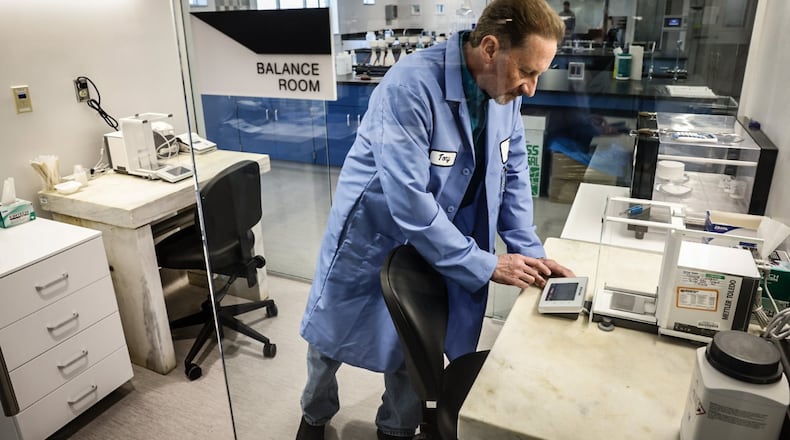Montgomery County’s funding came from the $1.9 trillion American Rescue Plan Act that President Joe Biden signed into law in March 2021. A total of $350 billion was allocated to help local governments across the country reeling from the pandemic.
All Montgomery County ARPA funds have been allocated ahead of the December deadline this year.
An estimated $42.3 million was allocated for infrastructure improvements in Montgomery County.
Credit: JIM NOELKER
Credit: JIM NOELKER
One of those projects is the Montgomery County Jail behavioral health wing, which received $9.2 million in ARPA funding. Renovations to the jail will increase the number of medical, mental health and detox beds from 12 to 112.
ARPA funds are also being used to help support several other projects, including $7.5 million for renovations to the Juvenile Justice Center, $6.3 million for upgrades to the new Environmental Services Laboratory and $1.1 million for the new Western Division Municipal Court in Trotwood.
County commissioners approved allocations of approximately $27.3 million to support human services initiatives.
Roughly $17 million in ARPA funds was directed to the Board of Developmental Disabilities Services to sustain its operations due to the department’s fiscal emergency, including home care services for clients and early intervention programs.
“I’m very thankful, commissioners, of you giving Developmental Disabilities $17 million runway that allows them to work this out with the state and our partners at Human Services Levy Council, so that we can have time to figure out what programs need to be adjusted and where these programs need to be working with people in the future,” Colbert said at a recent commission meeting.
Another $8.6 million was designated for foster care placements, while St. Vincent de Paul received $800,000 to continue its community support work.
Other community development initiatives were supported by ARPA funds. These include $1.5 million for the onMain Innovation Hub, $1 million for the Longfellow Commons housing project in West Dayton, and $750,000 for the new Adventure River Park in West Carrollton.
Another $350,000 was set aside for a Butler Township water quality project, which allowed some Butler Twp. residents to have their well water tested for PFAS, or per- and polyfluoroalkyl substances.
“We strategically allocated these funds to benefit residents with the greatest need,” said Colbert. “These key projects will have a wide-reaching impact, serving diverse demographics and geographic areas throughout the county.”
Credit: JIM NOELKER
Credit: JIM NOELKER
Federal aid also went toward nonprofit support, with Homefull in West Dayton, WestCare Ohio and the Ronald House receiving $2 million among the three organizations.
Approximately $7.6 million in ARPA funds went to technology upgrades in Montgomery County, $4.5 million at the Montgomery County Clerk of Courts’ office for cases management software.
Another $6.1 million was allocated to arts and tourism initiatives. This includes $4 million to support Dayton Dragons stadium renovations and $1.5 million for the Dayton Convention Center hotel development.
Credit: Montgomery County; Ohio
Credit: Montgomery County; Ohio
An additional $550,000 went to projects at the Dayton Art Institute, the Schuster Center and the WYSO radio satellite office at Dayton Arcade.
The cut of the pandemic relief dedicated to public health — $2.4 million — went to supporting vaccine distribution, contact tracing, medical supplies and other pandemic response efforts.
This includes $273,000 in pandemic-related supplied purchased for residents and staff at Stillwater Center, the area’s intermediate care facility that serves as a home for residents of Montgomery County with severe developmental disabilities, significant medical needs or a combination of the two.
A total of $6.9 million was allocated to cover COVID-related health insurance costs, payroll, legal and accounting services for managing ARPA compliance and other county administrative needs, according to officials.
Jurisdictions have until the end of 2026 to fully expend their funds.
“ARPA funds represent a crucial investment in the recovery and long-term resilience of our region,” said commission president Debbie Lieberman.
About the Author




